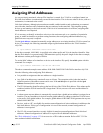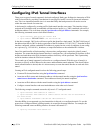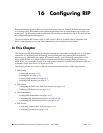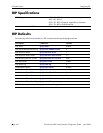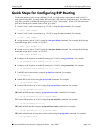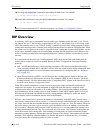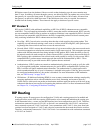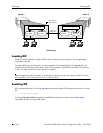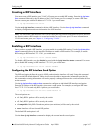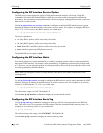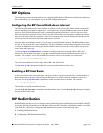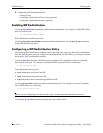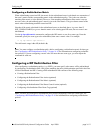
RIP Overview Configuring RIP
page 16-4 OmniSwitch 6600 Family Network Configuration Guide April 2006
14 Use the ip rip redist-filter command to redistribute all local routes. For example:
-> ip rip redist-filter local 0.0.0.0 0.0.0.0
15 Enable RIP redistribution using the ip rip redist status command. For example:
-> ip rip redist status enable
Note. For more information on VLANs and router ports, see Chapter 4, “Configuring VLANs.”
RIP Overview
In switching, traffic may be transmitted from one media type to another within the same VLAN. Switch-
ing happens at Layer 2, the link layer; routing happens at Layer 3, the network layer. In IP routing, traffic
can be transmitted across
VLANs. When IP routing is enabled, the switch uses routing protocols to build
routing tables that keep track of stations in the network and decide the best path for forwarding data. When
the switch receives a packet to be routed, it strips off the
MAC header and examines the IP header. It looks
up the source/destination address in the routing table, and then adds the appropriate
MAC address to the
packet. Calculating routing tables and stripping/adding
MAC headers to packets is performed by switch
software.
IP is associated with several Layer 3 routing protocols. RIP is built into the base code loaded onto the
switch. Others are part of Alcatel’s Advanced Routing Software. IP supports the following IP routing
protocols:
• RIP—An IGP that defines how routers exchange information. RIP makes routing decisions using a
“least-cost path” method. RIPv1 and RIPv2 services allow the switch to learn routing information from
neighboring RIP routers. For more information and instructions for configuring RIP, see “RIP Rout-
ing” on page 16-5.
• Open Shortest Path First (OSPF)—An IGP that provides a routing function similar to RIP but uses
different techniques to determine the best route for a datagram. OSPF is part of Alcatel’s Advanced
Routing Software. For more information see the “Configuring OSPF” chapter in the OmniSwitch 6624/
6648 Advanced Routing Configuration Guide.
When RIP is initially enabled on a switch, it issues a request for routing information, and listens for
responses to the request. If a switch configured to supply RIP hears the request, it responds with a
response packet based on information in its routing database. The response packet contains destination
network addresses and the routing metric for each destination. When a RIP response packet is received,
RIP takes the information and rebuilds the switch’s routing database, adding new routes and “better”
(lower metric) routes to destinations already listed in the database.
RIP uses a hop count metric to measure the distance to a destination. In the RIP metric, a switch adver-
tises directly connected networks at a metric of 1. Networks that are reachable through one other gateway
are 2 hops, networks that are reachable through two gateways are 3 hops, etc. Thus, the number of hops (or
hop count) along a path from a given source to a given destination refers to the number of networks that
are traversed by a datagram along that path. When a switch receives a routing update that contains a new
or changed destination network entry, the switch adds one to the metric value indicated in the update and
enters the network in the routing table. After updating its routing table, the switch immediately begins
transmitting routing updates to inform other network switches of the change. These updates are sent inde-
pendently of the regularly scheduled updates. By default, RIP packets are broadcast every 30 seconds,
even if no change has occurred anywhere in a route or service.



